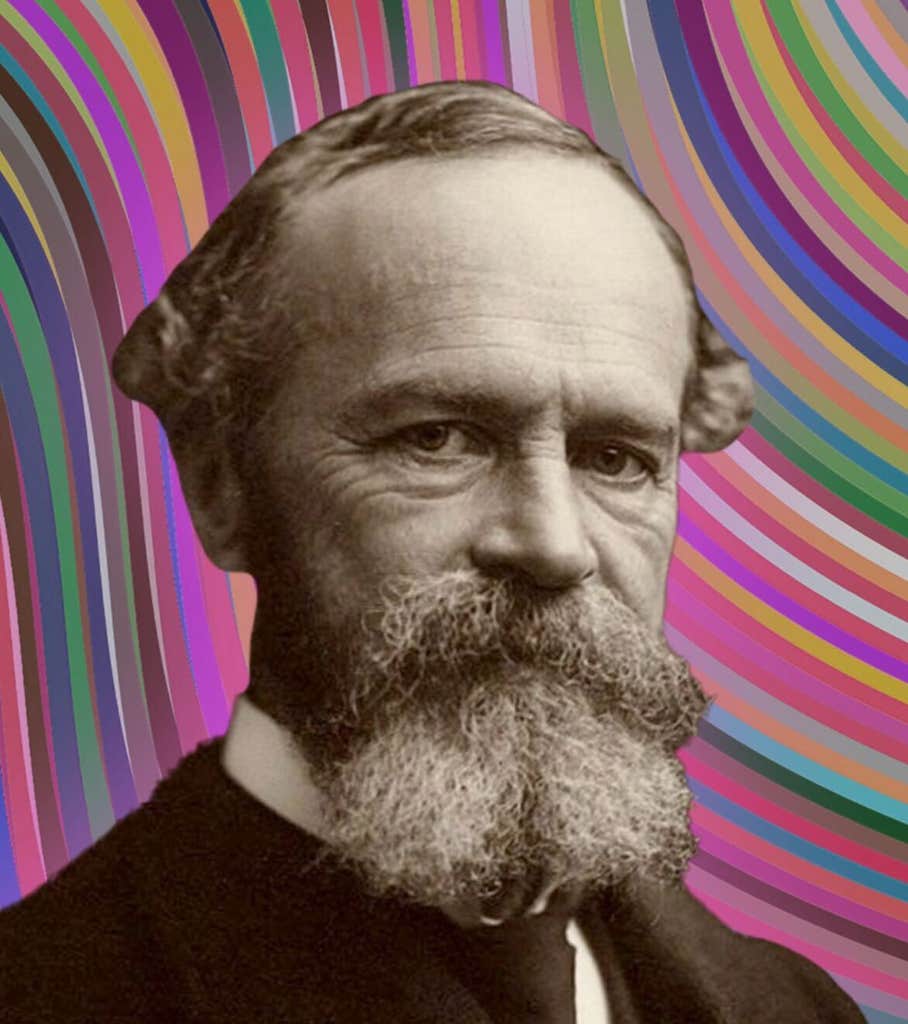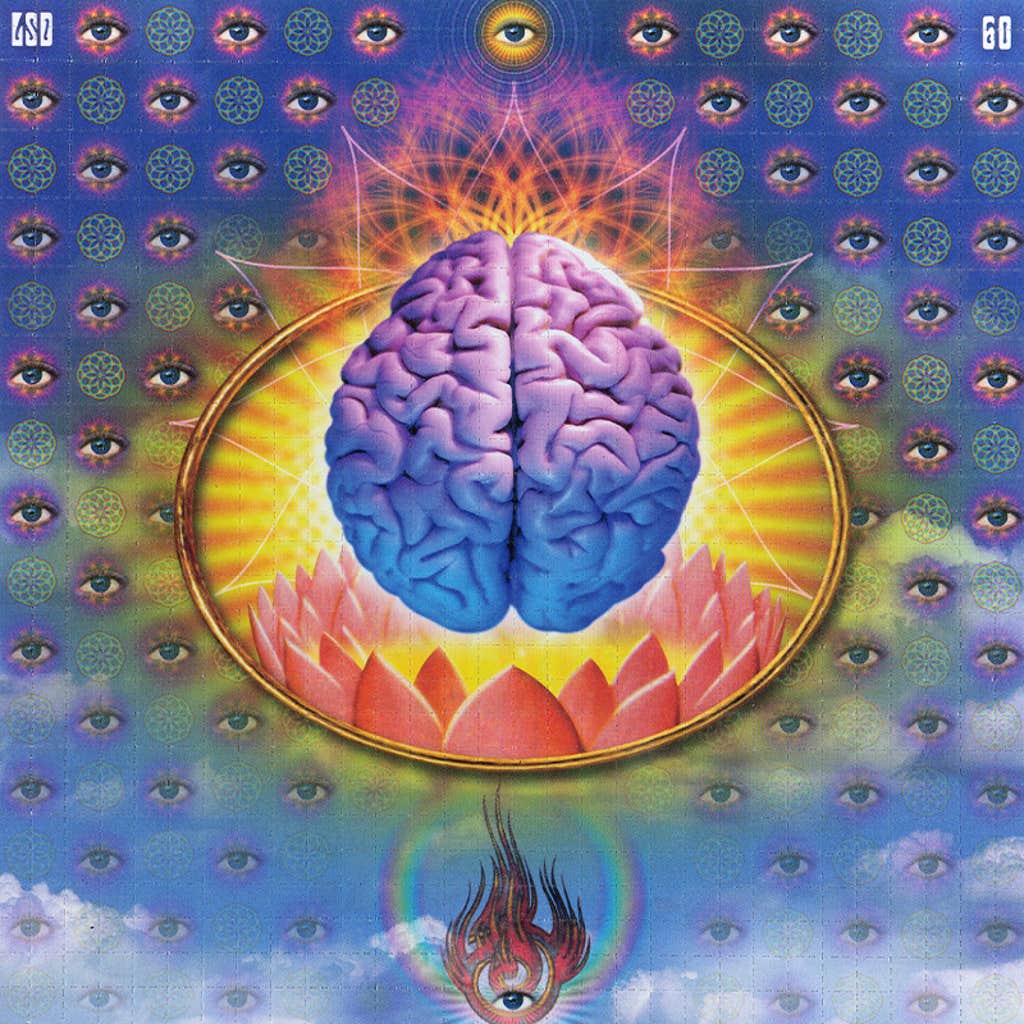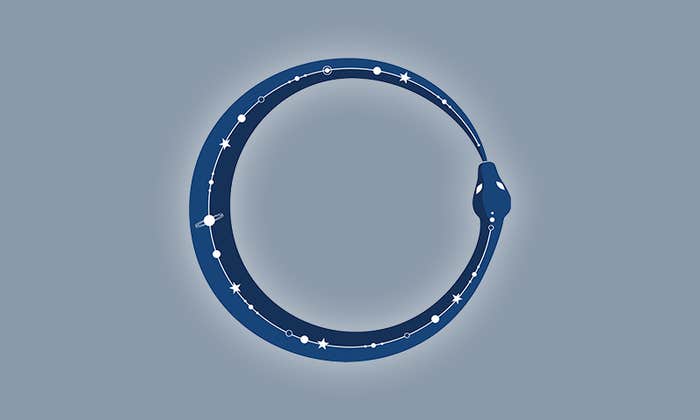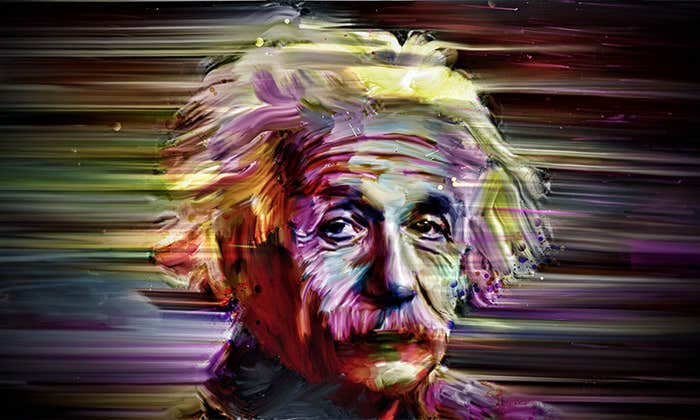Oliver Sacks wasn’t always the beloved neurologist we remember today, sleuthing around the backwaters of the mind in search of mysterious mental disorders. For a few years in the 1960s, he was a committed psychonaut, often spending entire weekends blitzed out of his mind on weed, LSD, morning glory seeds, or mescaline.
Once, after injecting himself with a large dose of morphine, he found himself hovering over an enormous battlefield, watching the armies of England and France drawn up for battle, and then realized he was witnessing the 1415 Battle of Agincourt. “I completely lost the sense that I was lying on my bed stoned,” he told me in 2012, a few years before he died. “I felt like a historian, seeing Agincourt from a celestial viewpoint. This was not ordinary imagination. It was absolutely real.” The vision seemed to last only a few minutes, but later, he discovered he’d been tripping for 13 hours.
These early experiences with hallucinogens gave Sacks an appreciation for the strange turns the mind can take. He had a craving for direct experience of the numinous, but he believed his visions were nothing more than hallucinations. “At the physiological level, everything is electricity and chemistry, but it was a wonderful feeling,” he said. When I asked if he ever thought he’d crossed over into some transpersonal dimension of reality, he said, “I’m an old Jewish atheist. I have no belief in heaven or anything supernatural or paranormal, but there’s a mystical feeling of oneness and of beauty, which is not explicitly religious, but goes far beyond the aesthetic.”
It’s strange how few people are talking about this topic.
I’ve often thought about this conversation as I’ve watched today’s psychedelic renaissance. Clinical trials with psychedelic-assisted therapy show great promise for treating depression, addiction, and PTSD, and a handful of leading universities have recently created their own heavily endowed psychedelic centers.
It’s not just neuroscientists and psychiatrists studying psychedelics. There’s a new generation of researchers—including philosophers, religious scholars, and anthropologists—who believe psychoactive experiences crack open deep questions about the nature of reality. They’re exploring ideas that have obsessed psychonauts for decades but until recently have largely been written off by scholars as fringe questions. Do psychedelics reveal a deeper dimension of the mind? Not just an altered state of consciousness—that’s obvious to anyone who’s ever tripped—but experiences that don’t begin and end in the brain? Do psychedelics open a pathway to theories about consciousness like panpsychism and animism—belief systems in which everything in the world—animals, plants, even rocks—are conscious or have some spiritual essence?
This question about a transpersonal reality hangs in the air, lurking behind this psychedelic moment. It shapes how we interpret the mystical experiences so common in psychedelic therapy. It informs metaphysics—the philosophical tradition that wrestles with fundamental questions about reality, like the relationship between mind and matter and the space-time continuum, which are precisely the kinds of questions that tend to surface in psychedelic experiences. It’s the question at the heart of the interface between the scientists who study psychedelics and many of their research subjects who believe they’ve tapped into some dimension of consciousness that extends beyond their own brains.
“People really don’t want to deal with it because it’s such a hairy problem,” says Erik Davis, a longtime chronicler of the psychedelic scene, and author of High Weirdness: Drugs, Esoterica, and Visionary Experience in the Seventies. “I find it very strange how few people are talking about this topic,” added philosopher Chris Letheby in an email. “I would have thought it was THE topic!”
Many drug-induced visions are clearly hallucinations. If giant fluorescent serpents suddenly appear in your ayahuasca revelry, you’re not likely to go looking for them once you’re sober. But other psychedelic experiences aren’t so easily explained. Like encounters with an other-worldly intelligence.
Consider one of the most celebrated stories in psychedelic history—Gordon Wasson’s experience with the Mazatec curandera Maria Sabina. Wasson was a banker at J.P. Morgan who’d spent years searching for a traditional healer who would initiate him in a mushroom ceremony. When he finally found Sabina in a remote village in southern Mexico, he persuaded her to help him “learn the secrets of the divine mushroom.” The experience changed Wasson’s life. He later reported seeing brilliantly colored palaces and a “mythological beast drawing a regal chariot.” “They seemed more real to me than anything I had ever seen with my own eyes,” he wrote in Life magazine in 1957.
Sabina had her own understanding of the mushrooms. She called them “the holy children” and claimed they danced around her, singing and playing music. She sang during her trance-like ceremonies and said the mushrooms spoke through her; she was just the translator.
Sabina’s account may sound like nothing more than a poetic description of a visionary experience, but some scholarly trippers take these experiences literally. Katherine MacLean, a psychologist who ran some of the early psilocybin trials at Johns Hopkins University, and the author of the 2023 “psychedelic memoir” Midnight Water, considers Sabina “a patron saint of mushrooms.” MacLean is a longtime tripper who believes psychedelics have uncanny qualities that defy scientific explanation. “Consensus reality is functional to a point,” she told me. “There are thresholds that most people don’t notice, and then suddenly, you might find yourself up at the doorway.”

VOYAGER: Psychologist William James was an early “psychonaut,” testing nitrous oxide on himself to see what it might reveal about the mind—and reality. Photo courtesy of Wikimedia Commons.
Aldous Huxley called this deeper reality “Mind at Large.” He believed we walk through our daily lives with blinders on, our consciousness funneled through a reducing valve in the brain so we don’t get overloaded with sensory input. But under a psychedelic, we might enter this expanded dimension of consciousness. Chris Bache, a religion professor who had 73 high-dose LSD journeys, claims he encountered “the mind of the universe.” At various times, he felt himself dying and being reborn, or communicating with an amorphous Council of Elders, or changing gender, even having sex and giving birth as a woman. “I can’t reduce these experiences to my brain or my personal unconscious,” he told me. “When you go outside of space and time, it’s just immediately obvious that you’re in a reality that’s far beyond anything that you’ve known inside Earth to experience.”
The challenge for scientists and other scholars of psychedelics is to develop an explanatory framework for evaluating these personal stories. Neuroscientists point to the serotonin 5-HT2A receptors activated by psychedelics like LSD and psilocybin, and brain imaging shows how these drugs can trigger neuroplasticity. Hardened neural circuits suddenly get rewired, at least for a few days or weeks. A psychedelic can strip away our sense of self and the perception of space and time, creating a mystical feeling of unity with the surrounding world. “Given this radical change in perspective, you would expect some radical change in the underlying neural basis, which so far we haven’t seen,” neuroscientist Christof Koch said. “But we’re still at a very early stage in the science.”
In his 2024 book Then I Am Myself the World, Koch suggests several possible explanations for this expanded state of consciousness. The neocortical regions of the brain that are activated when we’re angry, anxious, or self-critical seem to be sidelined under a psychedelic, which creates a more “open” psychological state. Another possibility is that psychedelics enhance certain cognitive processes, such as imagination, selective attention, and short-term memory. A third possibility, he suggests, is that psychoactive experiences boost the amount of integrated information in our minds, which then silences the sense of self and creates the perception of vastness in the world around us.
Koch, who pioneered the study of the neural correlates of consciousness with Francis Crick, has had his own profound psychedelic experiences. He describes his encounter with 5-MeO-DMT—aka the “toad”—as a near-death experience. “There was a bright light of overwhelming intensity, there was terror, and there was ecstasy,” he told me. “There was no ego, there was no memory, there was no Christof, there was no fear, there was no desire. I was gone.” As he regained consciousness, he cried and stripped off all his clothes and then curled up in a fetal position. “There isn’t a single day I don’t think about this experience,” he said.
It’s not surprising that Koch would seek out a transcendent experience with psychedelics. He grew up a devout Roman Catholic and yearned for some direct experience of God, but as he put it, “I never saw a burning bush.” Eventually, he lost his religious faith but never gave up his hunger for some underlying meaning in the cosmos. I asked Koch what he learned from his encounter with the toad. “It’s what Wittgenstein says in his Tractatus Logico-Philosophicus,” he said. “Once you understand the meaning of life, you don’t talk about it anymore. This was very vehemently reaffirmed through this experience.”
Does it matter if these other-worldly experiences are “real?” Many of today’s psychedelic scholars refer to William James, whose 1902 book The Varieties of Religious Experience sought to provide an intellectual grounding for mystical experiences. James’ fascination with mysticism was sparked by his own experiences with nitrous oxide, which he described as revealing “depth beyond depth of truth.” He claimed that mystical experiences are intuitive rather than conceptual. “Although so similar to states of feeling, mystical states seem to those who experience them to be also states of knowledge,” he wrote. “They are illuminations, revelations, full of significance and importance, all inarticulate though they remain; and as a rule, they carry with them a curious sense of authority for after-time.”
Today, a rubric called the Mystical Experience Questionnaire, derived from James and refined by later generations of psychedelic researchers, is used by scientists in clinical trials and by therapists at psychedelic retreats. The key qualities of mystical experience, according to researchers at Johns Hopkins, include the sense of the interconnectedness of all things, a merging with ultimate reality, the bending of space and time, ineffability, and the feeling that the experience is indisputably true—or as some people say, “realer than real.”
A little synchronicity is a beautiful thing. It’s like a little wink of God in your reality.
Mystical experiences are highly valued in psychedelic-assisted therapy. When a severely depressed person senses the presence of some life-enhancing reality while tripping, she’s more likely to break out of her despair if she believes the experience is real rather than just a feel-good hallucination. In fact, there’s evidence that psychedelics can change a person’s metaphysical beliefs.
“I was particularly interested in this idea that a single experience can change your outlook on what is the fundamental nature of reality,” said Chris Timmermann, a neuroscientist who runs the DMT research group at Imperial College London.
To test the idea, he helped develop the Metaphysical Beliefs Questionnaire. What he found was that a single psychedelic experience in a group setting, either with psilocybin or ayahuasca, led to a lasting shift in beliefs. “They rejected the idea that the fundamental nature of reality is physical or material,” Timmermann said. “And they endorsed panpsychism more strongly—the idea that everything in the universe is conscious, which is similar to some animistic perspectives you see in Indigenous cultures, that the world out there is alive.”
I asked Timmermann if he thinks psychedelics could reveal some transpersonal dimension of consciousness. “There is certainly a neural correlate in these experiences. Without the drug, there is no experience,” he said. “But whether that completely explains away the experience, I don’t know. I’m agnostic in that regard because ultimately, the causality around these experiences is very hard to determine.”
Chris Letheby, a philosopher at the University of Western Australia, has fewer questions about the causal mechanism behind psychedelic experiences. He’s written about what’s been called the “comforting delusion objection.” While acknowledging the healing power of mystical experiences, he asks, “What if the divine universal consciousness is not real?” In his book Philosophy of Psychedelics, Letheby refers to experiences of cosmic consciousness as “metaphysical hallucinations” and believes physicalism is the only credible perspective. He argues that psychedelics produce lasting therapeutic benefits by transforming our sense of self and changing how we relate to our own minds. In his view, there’s no need for any unfounded belief in a transcendent dimension of consciousness that extends beyond the brain.
But not every philosopher accepts Letheby’s premise. Peter Sjöstedt-Hughes, a philosopher at the University of Exeter, says the naturalistic framework of neurobiology and psychology isn’t the only credible perspective for understanding what’s real in psychedelic experiences.
“The whole ‘comforting delusion objection’ is based upon a certain metaphysics, which just assumes without argument that they are hallucinations,” he said. “You can only know if something’s a hallucination if you know what reality is. And by reality, I mean the relation between mind and matter at the fundamental level.”

Sjöstedt-Hughes’ own interest in psychedelics was serendipitous. He was teaching a course on religion but had no personal experience of anything remotely mystical. Then one day he was walking in Cornwall with his brother when they found magic mushrooms growing in a field. They picked a bunch, and after making sure they weren’t poisonous, he ate a few.
“The experience was so extremely profound and so different from anything I’d ever experienced, I then had to read all the philosophy about it,” Sjöstedt-Hughes said. As a scholar of metaphysics, this felt like hitting some deep vein in esoteric thinking: “A high-dose psilocybin experience will offer you states of mind that are so beyond anything you could have dreamt or imagined that it suddenly gives you all this new material to work with.”
After studying various philosophical systems, Sjöstedt-Hughes concluded that psychedelic experiences can line up with different non-materialist metaphysical beliefs, including idealism (reality is fundamentally in the mind) and pantheism (God is Nature).
“For example, if you take Spinoza’s view, as Einstein did, that mind and matter are essentially the same thing—they’re both expressions of something deeper—then you would expect the neural correlates of consciousness to be exactly the same as from an emergent physicalist point of view,” he said. “So when you have a psychedelic experience where your mind fuses with a universal mind or cosmic consciousness, we can’t necessarily say it’s a hallucination.”
What should we make of these experiences? If people say they’ve talked with angels or dead ancestors, should we dismiss them as raving, drug-addled trippers? These experiences often feel more revelatory—more real—than ordinary waking reality. “It’s almost impossible to write it off as a purely projective phenomenon,” said Erik Davis. “It seems like something in the external world, which has reorganized itself according to a different kind of logic that implies some level of reality or organization or super story that you’re involved in.”
Davis, who has a Ph.D. in religious studies, is not put off by over-the-top psychedelic stories. He’s written at length about the weird, other-worldly visions of psychonaut Terence McKenna, who claimed hallucinogens opened a portal into some interdimensional space with aliens. “One of the leitmotifs of psychedelic experience is synchronicity—uncanny coincidences that build on top of each other,” Davis said. “But at the same time, it leaves you with this problem. If you start building a worldview based on those experiences, it can lead you toward psychosis. A little synchronicity is a beautiful thing. It’s like a little wink of God in your reality. But if they start coming every five minutes, you better buckle your seatbelt.”
He had a 12-hour LSD trip, in which he asked his cancer a series of questions.
Contemplative traditions like Buddhism have a long history of trying to verify the truth of visionary or ecstatic experiences that arise during meditation. A novice meditator might talk with his teacher—comparing notes, you might say, to determine whether these experiences reveal something true and not just a distorted version of reality. Skillful guides in the psychedelic underground also draw on their own experiences when they work with neophyte trippers. A teacher might say that no single person has a straight line to the truth, and the idea that there’s some fixed, objective reality is itself a fiction. What’s accepted as “real” emerges from this shared understanding. Cultural expectations and communal rituals also shape our understanding of these experiences.
Psychedelics have their own distinct history, going back in Indigenous cultures, where much of our knowledge about plant medicines originated. Psilocybin, ayahuasca, and peyote were used for centuries in sacred ceremonies, long before Western scientists and drug companies swooped in and collected plant samples, looking for chemical compounds they could synthesize. In this older worldview, psychedelic experiences are rooted in relationships with everything around us—including plants and animals, even the juju of the mushroom or cactus itself.
“These medicines are not about the human experience alone,” said Yuria Celidwen, a Mayan scholar of contemplative practice at the University of California, Berkeley. Even the word “psychedelic,” which means “manifesting the mind,” is problematic for the Indigenous people I’ve interviewed. For Celidwen, there’s always a communal and ethical component to “spirit medicines,” as she prefers to call them. She believes it’s misguided to think of hallucinogens as primarily a tool for personal enlightenment, yet modern psychedelic culture has taken shape around highly individualistic experiences. It’s also baked into most scientific studies—typically, with the research subject lying down alone in a room, wearing eye shades and headphones, shutting out the external world to go inward. But the greatest insights on psychedelics may not be about ourselves but our connection with the world around us.
More than a century after he wrote The Varieties of Religious Experience, James remains a touchstone for many people who study psychedelics. He wasn’t afraid to consider the truth claims of mystical experiences, though he was careful not to endorse any belief in a supernatural or non-material reality. Yet James wrote about the optimistic, life-affirming quality of mystical experiences, notable because he had his own struggles with melancholia. He understood how a profound mystical experience can transform a person’s life. His long chapter on mysticism is filled with conversion stories—ecstatic experiences that chart a turning point and a new sense of purpose. “We pass into mystical states from out of ordinary consciousness as from a less into a more, as from a smallness into a vastness,” James wrote. “They appeal to the yes-function more than to the no-function in us.”
This experience of vastness is also the great promise of psychedelics for the people who use them, whether they suffer from depression or simply find life too drab and pointless. Even without any belief in a transpersonal realm of consciousness, what’s remarkable about psychedelics is their capacity to shake up and shift your worldview.
The psychopharmacologist Roland Griffiths, arguably the most important psychedelic researcher of the past two decades, leaned heavily into James and subsequent characterizations of mysticism. Griffiths had an international reputation as an expert on drug addiction when he kickstarted the psychedelic revival, persuading Johns Hopkins and various government agencies to allow him to run a clinical trial with psilocybin, specifically to see if it could elicit transcendent experiences.
In his 2006 study of mystical experiences, most of the participants ranked their high-dose psilocybin trip as one of the most spiritually significant experiences of their lives, and 14 months later, they reported substantial improvements in their “personal well-being, life satisfaction, and positive behavior change.” Griffiths’ research center went on to do a series of clinical studies showing remarkable potential for using psychedelics to treat addiction, depression, and end-of-life anxiety. If you wanted evidence of the transformative power of psychedelics, Griffiths was your man.
I interviewed Griffiths several times over a dozen years—the last time in 2023 when he was dying of colon cancer. Until then, he had always dodged questions about his own psychedelic use, but now he was ready to get more personal. He’d recently had his own 12-hour LSD trip, in which he asked his cancer a series of questions: Did he have to die? Was there anything he should do before he died? He described the experience as “dialoguing with an entity,” so I asked if he believed he had communicated with some intelligence beyond his own consciousness. No, he assumed this was some kind of internal wisdom welling up from deep inside himself.
Griffiths straddled two worlds. He always talked like a scientist, with little patience for those who believed the mushroom or Mother Ayahuasca possessed its own intelligence, but he was also a longtime meditator with an interest in mystical traditions. I wondered, what did he think would happen when he died? “I put the chance of an afterlife—continuity of consciousness—to be a diminishingly small probability,” he said. “But it’s not a zero probability because we are in this mystery. And that’s all I need.” ![]()
Lead art by The Blotter Barn
































